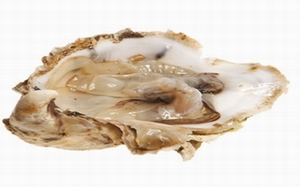 he warmer coastal water temperature produced by summer weather creates ideal conditions for bacteria that can contaminate oysters, the Washington State Department of Health reminded the public over the Fourth of July weekend.
he warmer coastal water temperature produced by summer weather creates ideal conditions for bacteria that can contaminate oysters, the Washington State Department of Health reminded the public over the Fourth of July weekend.Vibrio vulnificus and Vibrio parahaemolyticus, two types of bacteria that grow in warm waters and can cause human illness, are known to be carried by oysters, especially in summer months.
Because of this risk, it’s important to keep the following safety tips in mind when harvesting these molluscan shellfish, according to the Department:
Know shellfish harvesting conditions before you harvest. In Washington, consumers can call 1-800-562-5632 or check WADOH’s maps on its shellfish safety page to see if there are any beach closures.
Harvest shellfish from the beach as soon as possible after the tide rather than waiting until after they’ve been exposed to the air for a long time.
Refrigerate or put shellfish on ice immediately after harvesting and keep them cold until they’re prepared and eaten.
“We have great shellfish in Washington and we want people to enjoy them – safely,” said Jerrod Davis, director of the agency’s Office of Shellfish and Water Protection. “By following some simple safety tips, including cooking oysters thoroughly, people can stay healthy this summer.”
Vibrio parahaemolyticus infection is characterized by a gastrointestinal illness that usually lasts around three days, but can be more serious in people with compromised immune systems.
Vibrio vulnificus infection causes vomiting, diarrhea and abdominal pain in healthy individuals, but can develop into a life-threatening condition in those with compromised immune systems, especially in those with chronic liver disease, when it enters the bloodstream. This condition causes fever and chills, decreased blood pressure (septic shock), and blistering skin lesions. According to the Centers for Disease Control and Prevention, V. vulnificus bloodstream infections are fatal in about half of cases.
“Antibiotic treatments, cancer therapies and medications to treat heart conditions, diabetes, and acid reflux can cause a higher risk for serious illness,” warns WADOH of Vibrio infections.
Vibrio can be killed by extreme heat. Oysters must be cooked to an internal temperature of 145 degrees Fahrenheit for at least 15 seconds to ensure death of the bacteria, according to WADOH.
Oysters can also carry biotoxins, which cannot be killed by extreme heat. For this reason, people intending to harvest shellfish should check their local health department’s website for advisories about area risks and closures even if they intend to cook the oysters before consuming them.





